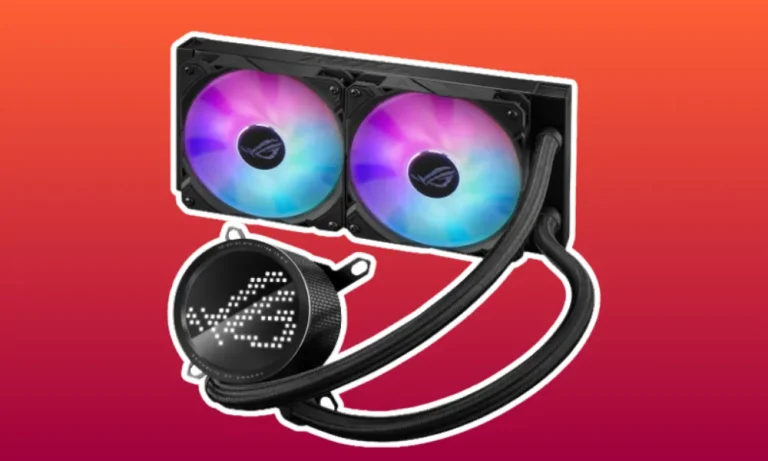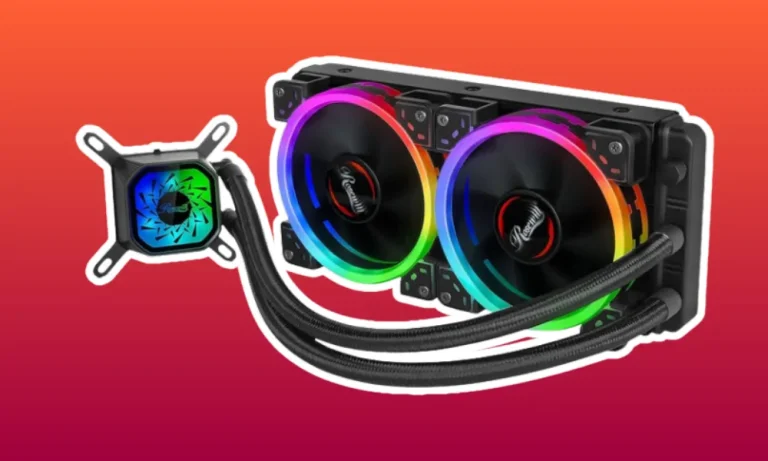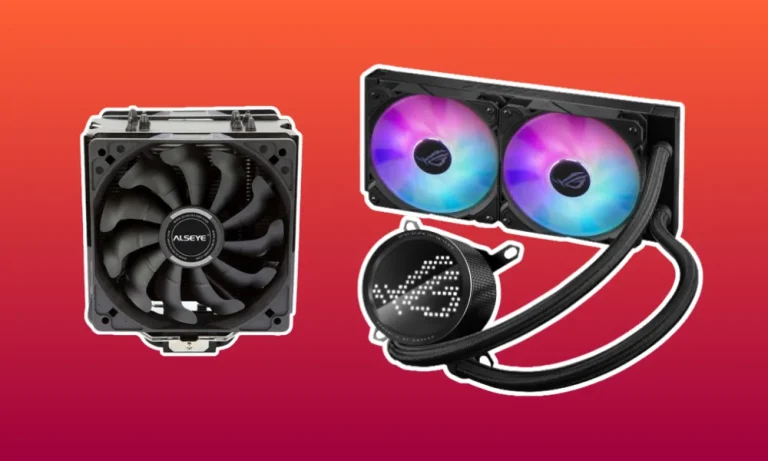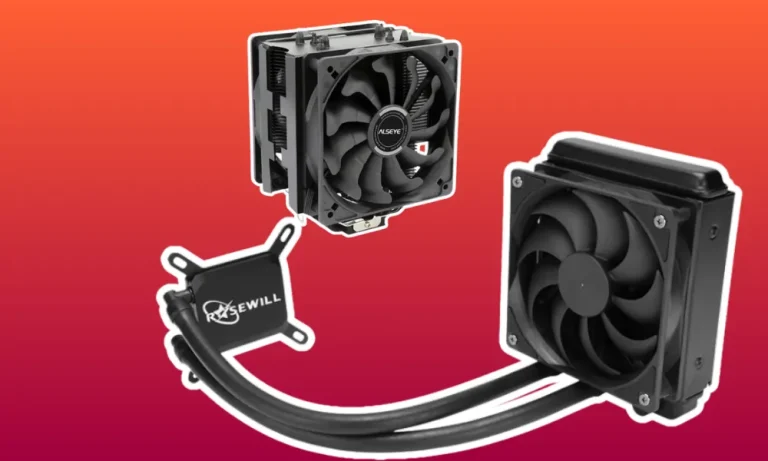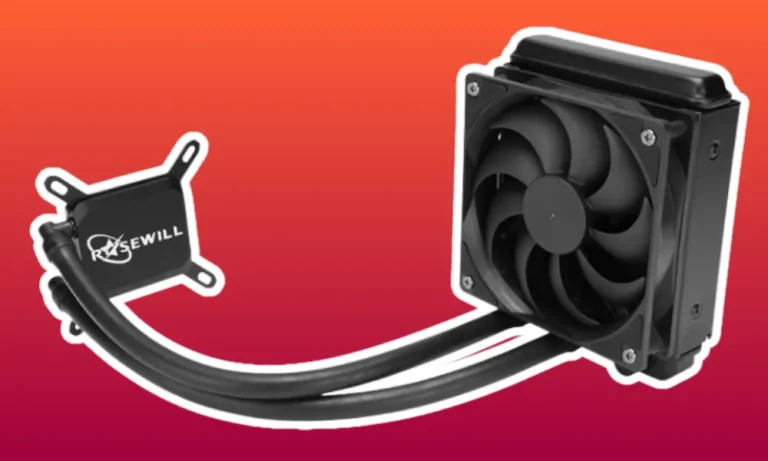Can a CPU Cooler Be Too Tight?
Is it possible to tighten a CPU cooler too much? You bet! When it comes to keeping your computer running smoothly, proper installation and mounting of the CPU cooler are crucial. But what happens when you go overboard with the tightness?
In this blog post, we’ll delve into the potential pitfalls of a too-tight CPU cooler and explore how it can affect your computer’s performance. Get ready to uncover the secrets of finding the right balance between security and potential damage.
Impact of Tightening a CPU Cooler
When it comes to installing a CPU cooler, finding the right level of tightness is crucial. But what happens if you go overboard and tighten it too much?
Effects of Overtightening the Cooler’s Mounting Mechanism
Overtightening the CPU cooler’s mounting mechanism can lead to a range of issues. One common problem is excessive pressure on the CPU and motherboard.
This can cause the CPU to bend or warp, leading to poor contact between the CPU and cooler. In turn, this can result in inadequate heat transfer and reduced cooling efficiency.
Potential Damage to the CPU and Motherboard
Tightening the CPU cooler beyond the recommended level can cause damage to both the CPU and motherboard. Excessive pressure can crack the delicate circuitry of the CPU, rendering it useless.
Additionally, the motherboard can suffer stress or even structural damage, affecting its overall functionality.
Impact on Heat Dissipation and Cooling Performance
The tightness of the CPU cooler plays a significant role in heat dissipation. If the cooler is overtightened, it can create an uneven distribution of pressure, leading to gaps between the CPU and the cooler.
These gaps hinder the transfer of heat, resulting in higher temperatures and potential overheating. In extreme cases, this can trigger thermal throttling, where the CPU slows down to prevent damage.
Signs of a CPU Cooler Being Too Tight
In our previous sections, we discussed the potential consequences of tightening a CPU cooler too much. Now, let’s explore how you can identify if your CPU cooler is indeed too tight and causing issues.
Overheating Issues and Thermal Throttling
One of the most apparent signs of a CPU cooler being too tight is overheating. If the cooler is exerting excessive pressure on the CPU, it can impede proper heat dissipation.
As a result, the CPU temperature can skyrocket, leading to performance issues and potential thermal throttling. Thermal throttling is a safety mechanism that slows down the CPU to prevent damage from excessive heat.
Unusual Noises or Vibrations
Another indication of a CPU cooler being too tight is the presence of unusual noises or vibrations. When the cooler is overtightened, it can cause strain on the CPU and motherboard, leading to vibrations and rattling sounds.
These noises can be a clear warning sign that the mounting mechanism is too tight and potentially causing damage.
Motherboard Bending or Warping
A visually noticeable sign of a CPU cooler being too tight is the bending or warping of the motherboard.
Excessive pressure from overtightening can cause the motherboard to flex, affecting its structural integrity. If you notice any abnormal bending or warping, it’s a strong indication that you need to readjust the tightness of the CPU cooler.
Optimal CPU Cooler Tightness
Finding the optimal tightness when installing a CPU cooler is crucial for maintaining proper cooling performance without causing damage.
Guidelines for Proper Installation Tightness
When it comes to tightening your CPU cooler, it’s important to follow some basic guidelines. Start by referring to the manufacturer’s instructions for the specific cooler model you’re using.
These instructions often provide recommended torque values or instructions on how many turns to make to secure the cooler. Following these guidelines ensures you stay within the safe range.
Balancing Between Secure Mounting and Potential Damage
The key is to strike a balance between secure mounting and avoiding potential damage. Remember, the purpose of a CPU cooler is to provide efficient heat dissipation while keeping the CPU and motherboard safe.
Applying too little pressure can result in poor heat transfer while overtightening can lead to the bending or warping of components.
Recommendations from CPU Cooler Manufacturers
To assist users in achieving optimal tightness, CPU cooler manufacturers often provide specific recommendations. These can include torque specifications, recommended turn counts, or even the use of specific tools for tightening.
By following these recommendations, you can ensure that your CPU cooler is installed correctly and within safe parameters.
Tips for Correct CPU Cooler Installation
Proper installation of a CPU cooler is essential for efficient cooling and preventing potential damage to your CPU and motherboard.
Step-by-Step Instructions for a Secure yet Safe Installation
To ensure a correct CPU cooler installation, follow these step-by-step instructions:
- Start by preparing the CPU and motherboard. Apply a small amount of thermal paste on the CPU’s heat spreader, ensuring even coverage.
- Carefully align the CPU cooler’s mounting bracket with the motherboard’s mounting holes. Make sure it is in the correct orientation.
- Gently place the CPU cooler onto the CPU, aligning the screws or mounting mechanism with the bracket.
- Begin tightening the screws or mounting mechanism in a crisscross pattern, gradually and evenly increasing the tightness.
- Check the manufacturer’s guidelines for the recommended torque or turn counts. Use a torque wrench or follow their specific instructions if provided.
- Once the CPU cooler is securely attached, double-check that all connections are properly seated, such as the fan power cable and any RGB lighting connections.
Importance of Following the Manufacturer’s Guidelines
Following the manufacturer’s guidelines is crucial for a successful CPU cooler installation. They are designed to ensure optimal performance, compatibility, and longevity of your cooler.
The guidelines often include specific torque values or turn counts, which, when followed, prevent overtightening or under-tightening.
Common Mistakes to Avoid During Installation
Avoid these common mistakes during CPU cooler installation:
- Overtightening the cooler can damage the CPU or motherboard.
- Using excessive thermal paste can lead to poor heat transfer.
- Forgetting to remove the protective plastic cover from the cooler’s base before installation.
- Neglecting to clean the CPU and cooler surfaces before applying thermal paste.
Troubleshooting and Fixing a Tight CPU Cooler
Encountering a tightly mounted CPU cooler can be a cause for concern, as it may affect your system’s cooling performance and potentially cause damage.
Steps to Loosen a Tightly Mounted Cooler Safely
If you find that your CPU cooler is tightly mounted and causing issues, follow these steps to safely loosen it:
- Turn off your computer and disconnect the power cable.
- Identify the screws or mounting mechanism that secure the cooler to the motherboard.
- Using the proper tool, gently loosen the screws or adjust the mounting mechanism in a counterclockwise direction. Take care not to apply excessive force or overtighten.
- Loosen the screws or adjust the mechanism gradually, alternating between them to ensure an even release of tension.
- Once the cooler is sufficiently loosened, carefully lift it off the CPU, taking note of any resistance or signs of potential damage.
Assessing Potential Damage and Taking Necessary Precautions
After removing the tight CPU cooler, assess the CPU, motherboard, and cooler for any signs of damage.
Look for bent or damaged pins, warping, or any unusual marks. If you notice any issues, take necessary precautions, such as consulting the manufacturer’s warranty or seeking professional assistance.
Seeking Professional Help if Needed
If you are unsure about fixing the tight CPU cooler yourself or if you suspect significant damage, it is best to seek professional help.
Experienced technicians can assess the situation, provide expert advice, and perform any necessary repairs or replacements to ensure the optimal functioning of your CPU and motherboard.
FAQs – Can a CPU Cooler Be Too Tight?
Can overtightening a CPU cooler cause damage?
Yes, overtightening a CPU cooler can potentially damage the CPU or motherboard due to excessive pressure, leading to bent pins, warping, or poor heat transfer.
How can I tell if my CPU cooler is too tight?
Signs of a CPU cooler being too tight include difficulty in removing the cooler, resistance when loosening screws, or visible damage on the CPU or motherboard.
Can a tightly mounted CPU cooler affect cooling performance?
Yes, a tightly mounted CPU cooler can impede proper heat dissipation, resulting in increased temperatures, reduced cooling efficiency, and potential performance issues.
What precautions should I take when loosening a tight CPU cooler?
When loosening a tight CPU cooler, be gentle and avoid applying excessive force. Loosen the screws or adjust the mounting mechanism gradually and evenly to prevent damage.
Should I seek professional help if my CPU cooler is too tight?
If you are unsure about fixing the tight CPU cooler yourself or suspect significant damage, it is advisable to seek professional assistance to ensure proper assessment and resolution of the issue.
Conclusion
A CPU cooler can indeed be too tight, leading to potential issues with cooling performance and even damage to the CPU and motherboard. It is crucial to follow proper installation guidelines, avoid overtightening, and seek professional help if needed. Maintaining the right balance ensures optimal cooling efficiency and the longevity of your system.

